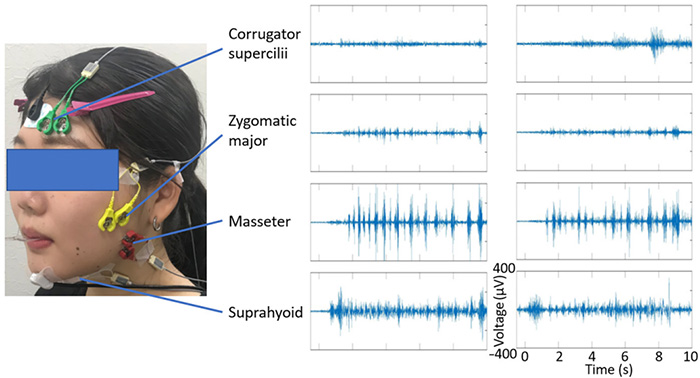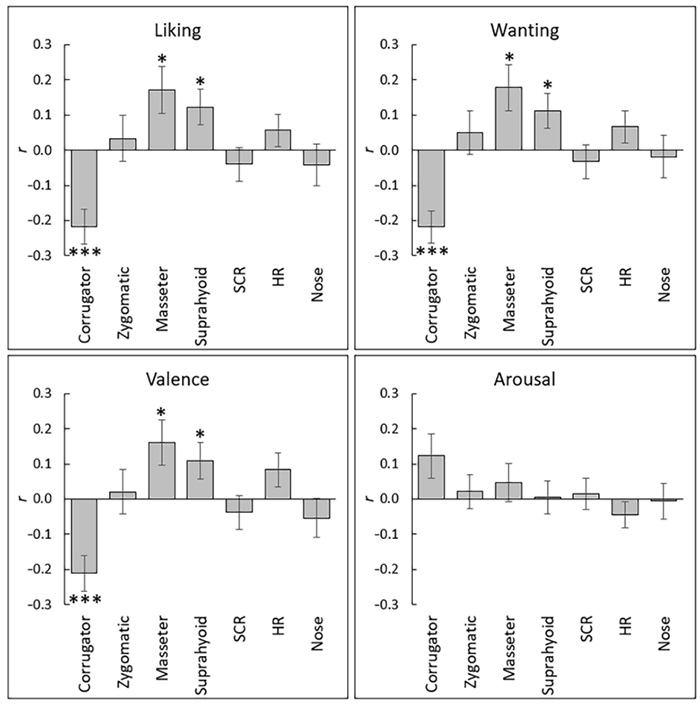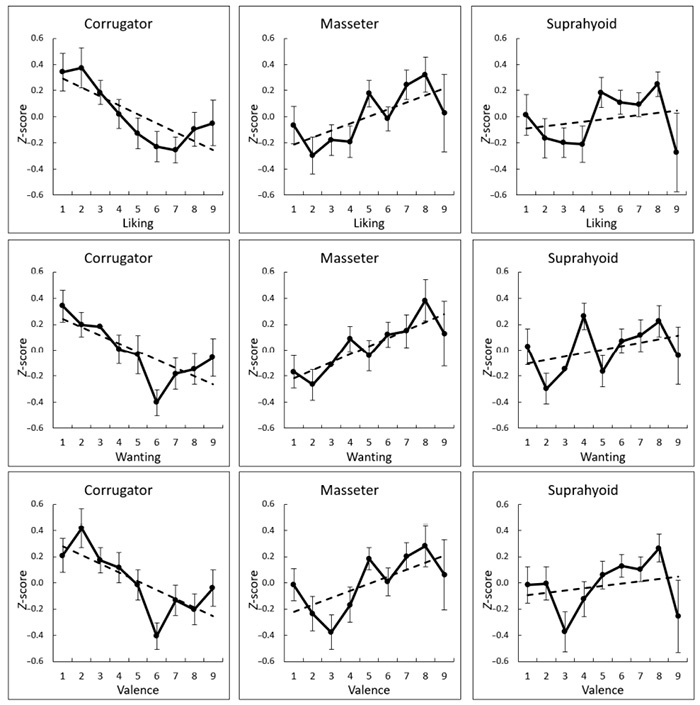SATO Wataru Laboratory
Brow and masticatory muscle activity senses subjective hedonic experiences during food consumption
(Sato, Ikegami, Ishihara, Nakauma, Funami, Yoshikawa, & Fushiki: Nutrients)
Sensing subjective hedonic or emotional experiences during eating using physiological activity is practically and theoretically important.
A recent psychophysiological study has reported that facial electromyography (EMG) measured from the corrugator supercilii muscles was negatively associated with hedonic ratings, including liking, wanting, and valence, during the consumption of solid foods.
However, the study protocol prevented participants from natural mastication (crushing of food between the teeth) during physiological data acquisition, which could hide associations between hedonic experiences and masticatory muscle activity during natural eating.
We investigated this issue by assessing participants' subjective ratings (liking, wanting, valence, and arousal) and recording physiological measures, including EMG of the corrugator supercilii, zygomatic major, masseter, and suprahyoid muscles while they consumed gel-type solid foods (water-based gellan gum jellies) of diverse flavors.


Ratings of liking, wanting, and valence were negatively correlated with corrugator supercilii EMG and positively correlated with masseter and suprahyoid EMG.


These findings imply that subjective hedonic experiences during food consumption can be sensed using EMG signals from the brow and masticatory muscles.
Return to
Recent Research.
Return to
Main Menu.



